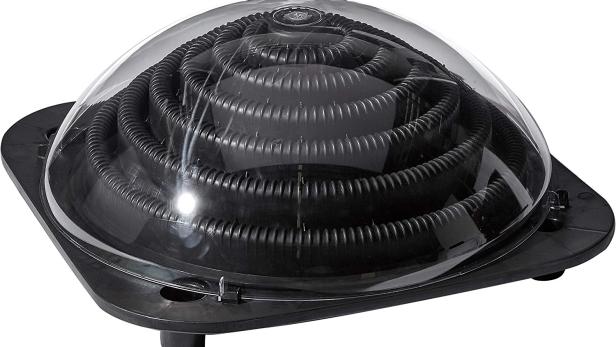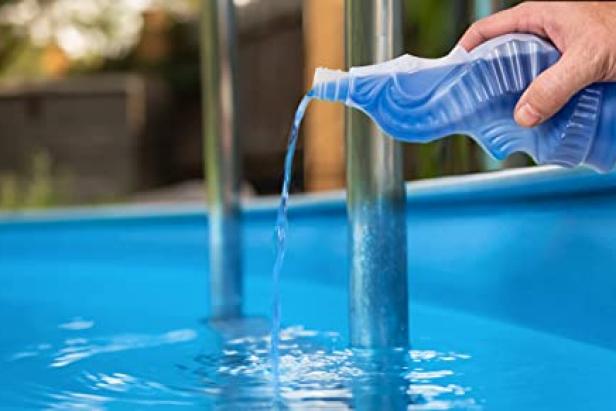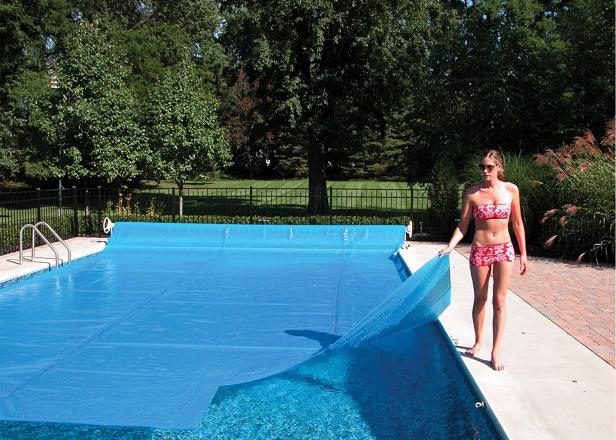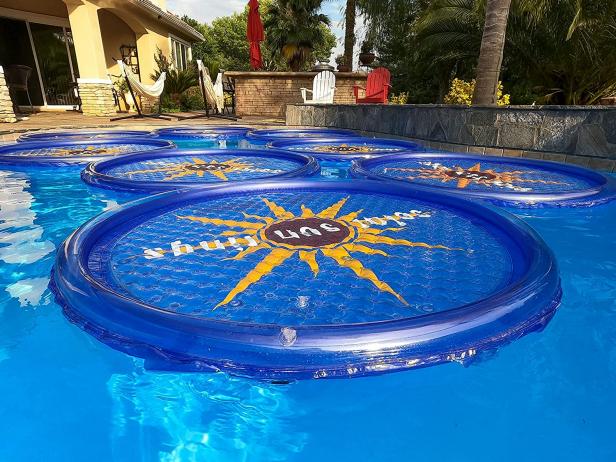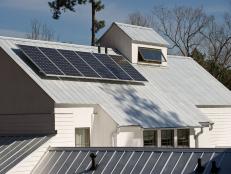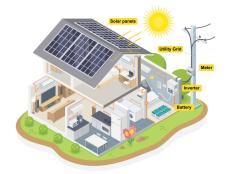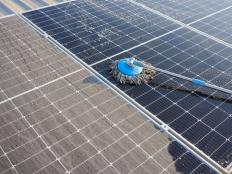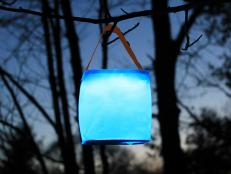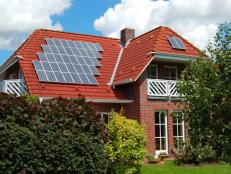Solar Pool Heating Ideas and Options for Every Budget
Extend your swimming season by keeping your pool's water temperature warm and inviting. Find low-cost, energy-efficient and DIY-friendly ways to heat your swimming pool with the latest solar devices.

Solar power generation gets a lot of attention, but the sun isn’t a one-trick pony. In addition to making electricity, the sun can heat the water in our homes and pools. Like their spotlight-hogging cousins, solar water-heating systems use collectors, but these solar collectors are designed to soak up thermal energy instead of light.
Solar pool heaters are the least expensive solar water-heating systems, good ones last for decades and they pay for themselves in energy savings in only a few years. You can often install them yourself or occasionally not install them at all. Let’s take a look at…
- The basics of the technology and what’s included in a system
- Solar pool heater pricing and the payback period
- How to get the right system for your pool
- Popular models
- Other ways to keep your pool toasty.
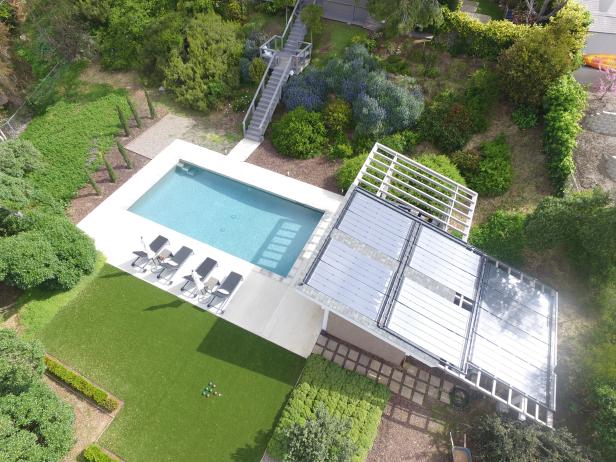
Solar Pool Supply, Inc.
Collectors for solar pool heating systems come in several styles to maximize efficiency in particular climates. Glazing on a collector protects it from low temperatures. This SwimLux system has been installed on a pool house roof.
How It Works: Using the Sun's Heat to Heat Stuff
The basic way all solar water heaters operate is similar: Thermal collectors absorb the sun's heat, transferring it to a stash of water that supplies your shower or pool. Pool systems are active solar water heaters. The active part means they use electric pumps to move water, usually making use of the pool's existing pump and filter. The pump pulls water from the pool, forcing it through the pool filter and a series of valves to control the flow. It travels through the collectors for heating and then back into the pool. As you can see, a solar pool heating system is a fairly simple production, and since you already have a pool pump, you might have guessed that the solar collector is the star of the show.
Metal collectors used to be common, but the vast majority of collectors on the market now are rectangular panels made of UV-protected polymers — plastic or rubber. Water enters the collector and travels through dozens of side-by-side tubes running the length of the panel. There are a few collector subtypes, with differences that make them more or less efficient in particular climates. For example, collectors designed for breezy coastal environments may have space between the tubes, allowing wind to pass through without taking the collector with it. Glazed collectors have an insulation layer that increases heat absorption in low temperatures and protects the collector from freezing. These are ideal for households with sleds and rock salt stored next to the pool toys in the garage.
Most of the time, in-ground pools and above-ground pools want different types of pool heaters. This is less about the ground than about compatibility with the existing pool setup: in-ground and above-ground pools use different plumbing. Also, though in-ground pools usually have collectors that are permanently installed like their pools, some above-ground pool owners may want portable collectors or smaller units they can shove in the garage when the season is over. The above-ground pool collectors come in panels as well, plus small mats and domes. In the latter type, water is directed through a coiled hose within the housing.
SwimEasy Triple Threat is a high-quality solar pool heater specifically designed for above-ground swimming pools, small in-ground pools and spas/hot tubs.
What’s in the Box
Solar collectors are daisy-chained together to meet the heating needs of your pool. To loop the collector(s) into your pool system and attach collectors to each other, you’ll need various plumbing connections. These include piping and hoses, elbow connectors, brackets, clamps and end caps. Valves are also necessary for servicing and drainage and to manipulate the water flow. A solar pool heating system can also have a temperature controller that uses a diverter valve, directing water to the collector(s) when the pool is too cool or back to the pool when the water is already toasty.
We said you’re using your existing pool pump, but professional installations of scale may include modifications to your existing pool plumbing system, such as incorporating a larger pool pump or using an ancillary pump for the solar heating path.
Collectors are installed on roofs, decks and racks using mounting equipment, with attention to both the orientation — mostly south, please — and the tilt in order to maximize heat absorption. Mounting hardware depends on the collector type and location but could include straps, brackets and clamps. A few collectors can just be plopped down next to the pool, but most panel-style systems work better when rack-mounted, even at ground level. Mounting can reduce heat loss, allow you to control the angle of the collector(s) and spare your lovely grass. Mounting also secures the system, which you’ll be grateful you did on the next windy day. Some of the hard-plastic, portable units have integrated racks with adjustable legs for angling.
Sizing a System
Obviously, a small above-ground pool in Georgia will have vastly different needs than a sizeable in-ground pool in Illinois. The first may make do with a compact heater mat or dome, whereas the latter would benefit from an extensive installed system the size of the pool itself. The standard way to size a solar pool heating system is by using the surface area of your pool. Professionals refer to this measurement as offset and it’s expressed in percentages. For typical heating needs, a 50% offset is the starting point, meaning the collector footprint will be 50% of your pool footprint at minimum. Larger pools, shadier setups and greater heating needs over longer seasons will require a larger collector footprint, up to 100% offset. Offset is a useful measurement because the majority of pool heat loss occurs on the surface through evaporation.
Pricing
A professionally installed solar pool-heating system averages between $2,500 and $4,000, according to Energy.gov. This upfront figure is price-competitive with popular pool-heating alternatives — the electric heat pump and fuel-powered heaters (gas and propane) — but solar is unique among pool heaters in costing you next to nothing to operate or maintain. Establishing your solar payback period can help you see the real price by comparing solar to non-solar options. Take the price of the solar pool heating system and divide that figure by the annual cost of operation of the alternative technology. The number you get is how many years it takes to pay yourself back for the purchase in energy bill savings. Energy.gov expects the typical solar water heating system to do so within 1 to 7 years. An electric or fuel-powered pool heater? Um, never. In terms of durability, solar technology generally lasts longer than gas and heat pump pool heaters. Repairs to polymer collectors are minimal and often within the homeowner’s purview.
Above-ground pool heater pricing runs the gamut — starting at as little as $40. But those inexpensive heaters shouldn’t be expected to have much of an impact on your pool temp. They commonly use inferior plastics too, which degrade quickly from sun exposure, so buyer beware. All that said, if your needs are small or you’re looking for something portable, a solar pool heater can be a very simple animal: You throw a collector or two in a sunny spot, tap into your system after the filter and voila!

Solar Pool Supply, Inc.
Solar pool heating collectors can be installed on a roof or mounted on a rack on the ground. These collectors are installed in series on a standing seam roof.
How to Choose the Correct System
First and foremost, your solar pool heating system will need to play well with your existing pool equipment. Then, the collector has a job to do: meet your water-temperature needs for your desired pool season. Your climate, pool size and particular home environment all factor into the choice of collector and how many you need. Additional personal considerations may include ease of self-installation, portability for an above-ground system and, of course, cost.
We asked Matt Yoder, Director of Growth at the popular online retailer Solar Pool Supply, for insight into some of these crucial aspects of getting the right system. The company sells many of the major brands, and its business model is based on the notion that with adequate instruction and a professional product, consumers can be empowered to do their own solar pool heating installations.
Yoder explains that for the best performance, the collector needs both the proper flow rate and volume of water to and from the system. So, the biggest compatibility concern between a new solar pool heater and the existing pool setup is your pump horsepower, with pipe size another consideration. He says, “If the water is moving too slow it will overheat the solar collector and not cycle enough total water volume per day to properly heat the pool. If the flow rate is too fast, it will not draw enough heat out of the collector to properly heat the water.” A 1.5 to 3.0 horsepower variable speed pump is the best pump for most solar systems, says Yoder, and he recommends a flow meter to monitor and adjust the flow rate.
Yoder’s company generally uses the offset to size solar pool heating systems, but if the pool is abnormally shallow or deep, his team might also take pool volume (gallons) into consideration. With a few exceptions, they find system sizing to be pretty consistent across the country — a minimum 50% offset and increasing from there to extend the swim season. One common misconception is that in all hot and sunny regions, the smallest system will suffice. Not so in Florida, he says. The widespread use of screen enclosures to keep critters and debris out of pools increases the need. Yoder explains, “This affects the number one source of pool heating which is the sun, so screened pools do need more heat and typically require 75% [offset] to maximize swim season in Florida.” The other surprise is those regions with harsh winters. You might expect a 100 percent offset in these areas, but Yoder says 75% is typically sufficient to maximize the swim season that’s available.
Should you try to install a roof-mounted system yourself or call a contractor? For homeowners with unique roofs or a fear of heights, going pro is surely the best bet. But if you’re a confident roof-scrambler with the right tools in your toolbelt, you can save quite a bit of cash installing the system yourself. Yoder says the most intimidating aspects of a homeowner installation are making the roof penetrations to mount the system and the plumbing work to tie it into the existing pool equipment, but he is a firm believer that most people are capable. There are limits to his DIY devotion. “Scenarios where we would actually recommend a professional,” Yoder says, “would be systems with complex plumbing designs or very large systems that require a very high flow rate and large diameter PVC pipe where plumbing techniques are critical.”
Popular Products
If you’re ready to take the plunge, premium in-ground solar pool heating systems by top manufacturers are sold all over the country through authorized installer networks. Get a few recommendations from friends or neighbors to compare. To self-install, Solar Pool Supply is an authorized online retailer of several major brands, and the company has properly comprised DIY kits and a lively helpdesk to take the mystery out of piecemealing a system yourself. The company just added a premium system for the above-ground market to its repertoire of in-ground pool heaters.
Larger and installed: The SwimEasy Triple Threat kit incorporates one of Solar Pool Supply’s high-quality collectors for in-ground pools, with the plumbing connections and adaptors to make it work with any pool type.
Small and portable: An Amazon-customer favorite for small above-ground pools is the Kokido Keops Solar Dome, for its ease of installation and portability at less than 2 feet square.
Extend your swimming season with the Kokido Keops Solar Dome Above Ground Pool Water Heater. This cost-effective pool heater is compatible with most above-ground pools and includes 4-foot hoses, fittings and stainless steel clamps. It will dramatically reduce pool heating costs and has an integrated rack that helps set up an optimal angle for the heater to receive maximum sun exposure.
Your pool heater actively adds heat to your pool, but you can help it along using passive strategies that prevent heat escape from evaporation. First and foremost, Energy.gov recommends covering the pool when not in use, particularly at night, and in breezy regions adding a windbreak like a fence or a privacy hedge around the pool. There are also a few inexpensive pool accessories to prevent heat loss.
Liquid solar covers use chemistry to reduce evaporation, forming an imperceptible single-molecule layer on the surface of your pool. These products are sold in bottles and in slow-release dispensers taking the form of tropical fish and other sea creatures.
Liquid Heat is a liquid solar blanket that acts as a conventional pool blanket, once its used it forms a thin layer that covers the entire pool surface this will reduce evaporation by up to 50%
A solar pool blanket is a transparent plastic, full-pool overlay sometimes resembling bubble wrap (resist the urge to pop!) that reduces evaporation while absorbing more heat than a traditional opaque pool cover. This one by Sun2Solar is an Amazon fave.
Sun2Solar solar covers reduce the cost of heating your swimming pool. These covers don’t rely on fossil fuels or electricity, instead they provide an effective and affordable heating solution using the no-cost sun. Comes in a wide variety of style, colors and sizes.
Pool rings and squares, sold in packs, are a similar technology to the solar blanket but smaller. They are intended to cover 50% to 90% of your pool surface. Solar Sun Rings are a best-seller.
Solar Sun Ring is composed of two sheets of UV-resistant vinyl that convert solar energy into heat, adding free heat to your pool with only the power of the sun.
Pool Systems 101: Saltwater vs. Chlorine
Saltwater and chlorine systems are two of the most common pool sanitization systems. Learn about the pros and cons of each system and find some new alternatives to each.







